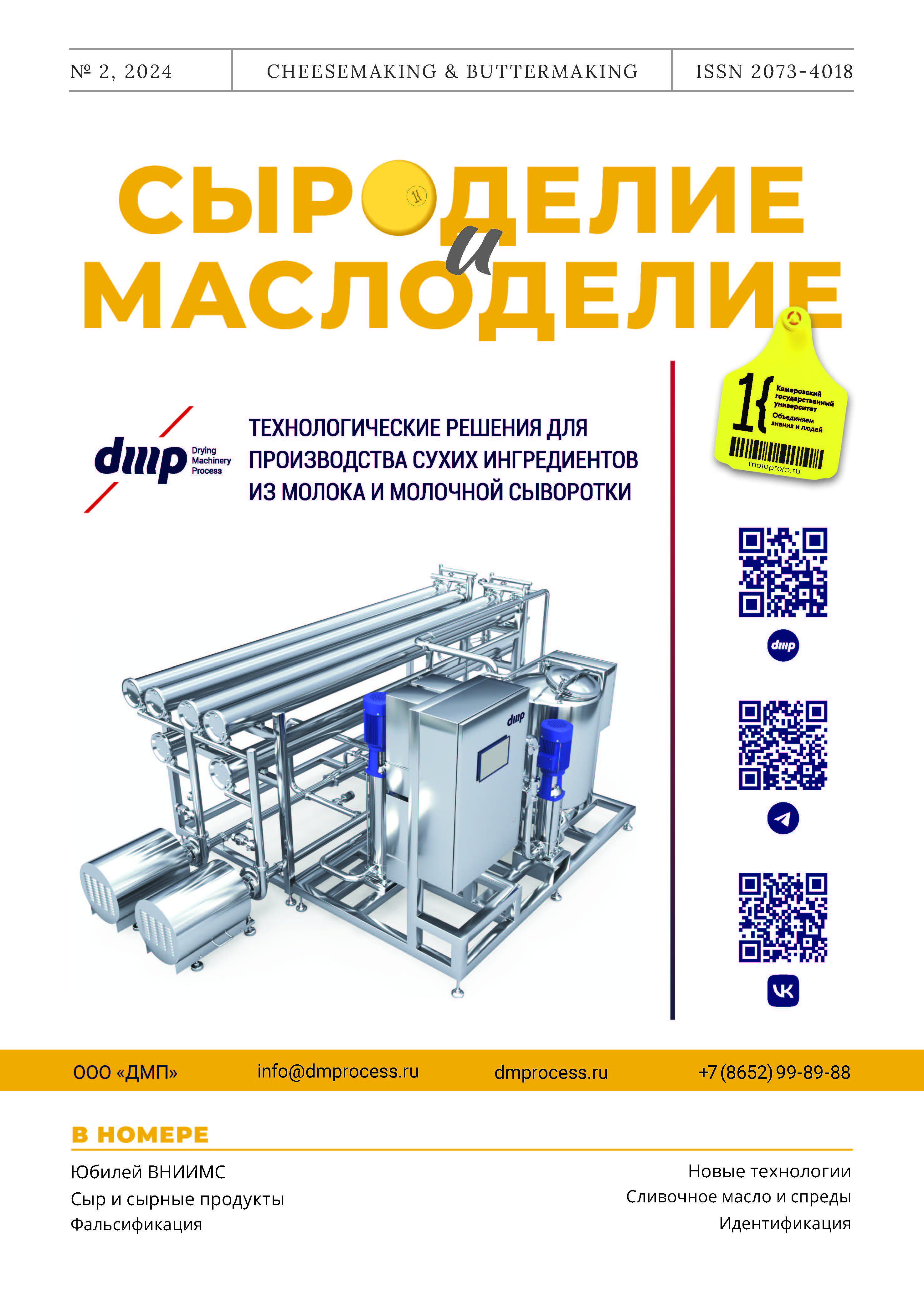Uglich, Russian Federation
Uglich, Russian Federation
Uglich, Russian Federation
Uglich, Russian Federation
Cheeses with unconventional taste properties are currently very popular among various segments of consumers. Taste is the fundamental of sensory evaluation; it determines the consumers’ choice and buying decision. The sensory profile of cheese develops as a result of enzymatic processes during maturation, which are initiated by the starter culture microflora. These biochemical processes and their intensity depend on the species and strain composition of starter cultures. Propionic acid bacteria affect enzymatic processes during maturation. As a result, the cheese accumulates a wide range of flavor compounds that give it a characteristic taste, aroma, consistency, and pattern. Taste assessment methods rely on the correlation between volatile compounds and sensory properties. They reveal the taste complexity and variability of different brands of cheeses with propionic acid bacteria. These methods improve the taste profile and quality of cheeses during storage.
propionic acid bacteria, cheese with propionic acid bacteria, technological features, sensory evaluation, cheese taste
1. Kal'kova, N. N. Issledovanie potrebitel'skih predpochteniy i faktorov, vliyayuschih na vybor syra v real'noy srede / N. N. Kal'kova // Vestnik Altayskoy akademii ekonomiki i prava. 2021. № 8. S. 22–31. https://doi.org/10.17513/vaael.1805; https://elibrary.ru/owrjjw
2. Gudkov, A. V. Syrodelie: tehnologicheskie, biohimicheskie i fiziko-himicheskie aspekty / A. V. Gudkov. – M.: DeLi print, 2003. – 803 s. 3. MakSuini, P. L. G. Prakticheskie rekomendacii syrodelam / P. L. G. Mak Suini. – SPb.: Professiya, 2011. – S. 243–262.
3. MakSuini, P. L. G. Prakticheskie rekomendacii syrodelam / P. L. G. Mak Suini. – SPb.: Professiya, 2011. – S. 243–262
4. Orlova, T. N. Propionovokislye bakterii i ih znachenie / T. N. Orlova, I. A. Funk, E. F. Ott, R. V. Dorofeev. // Syrodelie i maslodelie. 2020. № 1. S.28–29. https://doi.org/10.31515/2073-4018-2020-1-28-29; https://elibrary.ru/lkivce
5. Vorob'eva, L. I. Propionovokislye bakterii / L. I. Vorob'eva. – M.: Izdatel'stvo MGU, 2013. – 286 s.
6. Castada, H. Z. Swiss Cheese Flavor Variability Based on Correlations of Volatile Flavor Compounds, Descriptive Sensory Attributes, and Consumer Preference / H. Z. Castada, K. Hanas, Sh. A. Barringer // Foods. 2019. № 8. https://doi.org/10.3390/foods8020078
7. Ustinova, E. V. Potencial profil'no-deskriptornogo metoda v organolepticheskoy ocenke kachestva syrov / E. V. Ustinova // Tehnicheskiy opponent. 2023. № 4. S. 11–15. https://elibrary.ru/ktrgqg
8. Mardar, M. R. Deskriptornye metody organolepticheskogo analiza v ocenke kachestva syra / M. R. Mardar, E. A. Davydova, A. N. Lilishenceva // Pischevaya promyshlennost': Nauka i tehnologii. 2020. № 4 S. 6–14. https://doi.org/10.47612/2073-4794-2020-13-4(50)-6-14; https://elibrary.ru/aqimrq
9. Mordvinova, V. A. Faktory, vliyayuschie na kachestvo syrov tipa «Maasdam» / V. A. Mordvinova, G. M. Sviridenko // Syrodelie i maslodelie. 2015. № 3. S. 28–30. https://elibrary.ru/twrpkl
10. MakSuini, P. L. G. Syr. Nauchnye osnovy i tehnologii. T. 2. Tehnologii osnovnyh grupp syrov / P. L. G. MakSuini, P. F. Foks, P. D. Kotter, D. U. Everett. – SPb.: Professiya, 2019. – S. 287–308.
11. Nikolaeva, E. A. Vliyanie na organoleptiku produkta sposoba uhoda za syrom pri sozrevanii / E. A. Nikolaeva // Syrodelie i maslodelie. 2006. № 5. S. 30–31. https://www.elibrary.ru/kxekkh






